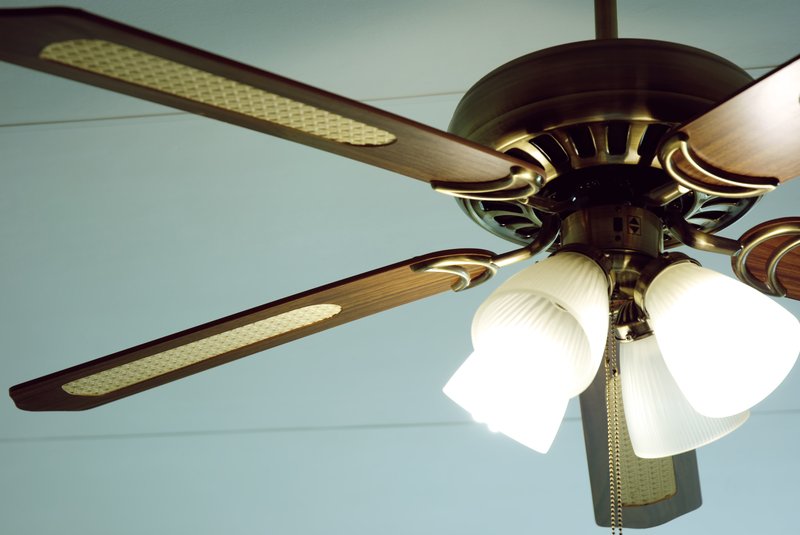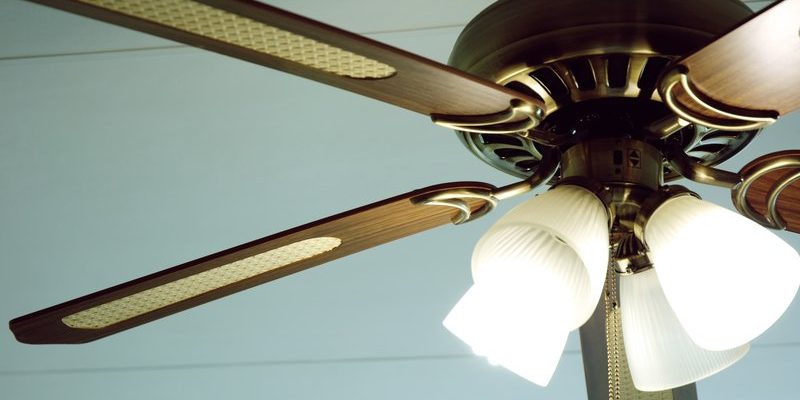
Harbor Breeze is a popular name for ceiling fans and their remotes. Maybe you already have one, or maybe you just stumbled across it while looking for a replacement. The question of whether a Harbor Breeze ceiling fan remote works with other brands is more common than you might think. It sounds simple, but the truth is, ceiling fan remotes are a little like puzzle pieces. They don’t always fit together the way you wish they would. Let’s untangle this together and see exactly what’s possible, and what isn’t.
How Harbor Breeze Remote Controls Communicate With Ceiling Fans
Here’s the thing—ceiling fan remotes like Harbor Breeze use a mix of signals and codes to talk to their fans. Think of it like having a secret handshake; unless both the fan and the remote know the exact moves, nothing happens. Inside most Harbor Breeze remote controls, you’ll find a small circuit board programmed to send signals to a matching receiver connected to the fan. This signal is usually infrared (IR) or, more often these days, radio frequency (RF).
If you ever open up the remote’s battery compartment, you might notice a set of tiny switches called “dip switches.” These switches set a unique code so your neighbor’s fan isn’t spinning every time you change your own. The remote has to match the receiver’s code exactly. Harbor Breeze uses a pretty standard approach here, but every brand tweaks the recipe a bit. Some brands use different frequencies, coding patterns, or even proprietary sync protocols that keep them in their own little world.
You might be tempted to try pairing a Harbor Breeze remote with another brand’s fan, but unless the internal language matches, the devices just won’t “hear” each other. Honestly, it’s a bit like trying to unlock a Ford with a Chevy key—might look similar, but no dice without the right code.
Why Ceiling Fan Remote Compatibility Is Tricky
Let me explain why things get complicated. You’d think that ceiling fan remotes would work like TV remotes—a universal clicker could handle every device in the house. Sadly, that’s rarely true for ceiling fans. Brand-specific remotes, including Harbor Breeze, often rely on unique pairing methods, codes, and even physical wiring configurations inside the fan’s receiver.
Here’s where the real headache starts: even if two remotes share the same frequency, their code systems can be entirely different. One fan might expect four dip switches, and another six; worse, some modern fans use auto-syncing RF remotes that ditch switches altogether. Swapping remotes without matching the receiver is like speaking English to someone expecting French: nobody’s getting what they want.
This is why losing a fan remote isn’t just an inconvenience—it can turn into a real scavenger hunt. Finding a Harbor Breeze replacement for a Harbor Breeze fan? Usually no problem. But using it with a different brand? The odds are slim unless both brands have a history of sharing compatible components (which is rare).
Pairing and Syncing Process: Harbor Breeze Remotes vs. Other Brands
You might be wondering: “Can’t I just sync or pair the Harbor Breeze remote to my other brand’s fan?” If only it were that easy! The pairing process is a little different for every brand, and even models within the same line can vary. Harbor Breeze remotes typically require you to set the matching code on both the remote and the receiver. That often means flipping dip switches or pressing a “learn” button during installation.
Other brands, like Hunter or Hampton Bay, have their own pairing quirks—sometimes involving turning the power off and on or pressing obscure buttons in a certain order. The trouble is, unless the fan’s built-in receiver recognizes the exact Harbor Breeze “handshake,” those sync and reset steps just won’t work.
Here’s a real-life example: Say you have a Harbor Breeze remote and you try to pair it with a Westinghouse fan. You set the code, press the buttons, even swap the batteries. The fan just stares back at you, unamused. That’s because the code systems are different. On rare occasions, two remotes from different brands may share a compatible receiver—especially if they’re both manufactured by the same OEM (original equipment manufacturer)—but guessing this is a lottery.
Universal Ceiling Fan Remotes: A Better Solution?
When you’re tired of searching for a compatible remote, universal ceiling fan remotes start to sound like a genius move. Universal remotes are built to work with a wide variety of brands, including Harbor Breeze, Hunter, Hampton Bay, and more. They usually come with a new receiver that you install inside your fan housing, letting you bypass the whole “brand compatibility” chaos.
Here’s how it works: You remove the old receiver, fit the universal one in, and sync it up with the included remote. Most universal kits bring clear, beginner-friendly instructions, and you don’t need to be an electrician. Worst case, you call a handy friend or a pro for help. The main perk? You’re no longer tied to a single brand’s proprietary system.
Universal remotes often handle light dimming, speed adjustments, and even fan direction. So, if you’re frustrated with trying to make your Harbor Breeze ceiling fan remote work with other brands, installing a universal receiver and remote can be a real game-changer—like putting a master key in your pocket for all your fans.
Common Problems When Mixing and Matching Fan Remotes
Mixing remotes and ceiling fans sounds easy in theory, but it can turn into a comedy of errors. Let’s break down some common headaches:
- No response: You press every button but the fan doesn’t budge. Almost always, this means the codes or frequencies don’t match.
- Partial functionality: Maybe the light works, but the fan speed doesn’t. Sometimes, brands use similar signals for basic on/off functions, but more complex features (like speed or dimming) just refuse to cooperate.
- Intermittent operation: Ever had the fan turn off randomly, or lights flicker? That’s usually a sign of crossed signals or a code mismatch, possibly even interference from another remote in the house.
- Battery drain: Some remotes keep searching constantly for a compatible receiver, draining the battery faster than normal. This isn’t super common, but it’s worth noting.
If any of these sound familiar, chances are you’re facing a code or receiver issue—not a dead battery or a “simple” sync problem. Harbor Breeze remotes, like most brand-specific models, are happiest in their own families.
Troubleshooting Harbor Breeze Remote Issues
Let’s say you’re struggling with a Harbor Breeze remote and want to make sure the problem isn’t something easy before giving up on brand-mixing. Here’s what you should try with any ceiling fan remote:
- Change the batteries: Yes, this sounds basic, but even fresh-looking batteries can lose voltage. Try new ones and make sure they’re in the right way.
- Check the dip switches: Double-check that the code inside the remote matches the one in the fan’s receiver. Even one wrong switch will break the connection.
- Reset and pair again: Power off the fan at the breaker, wait 30 seconds, then turn it back on and try the pairing process as described in your manual.
- Look for interference: Electronic devices, especially other remotes, can confuse your ceiling fan receiver. Turn off nearby remotes and see if that helps.
If none of this works, and especially if you’re trying to control a non-Harbor Breeze fan, you can bet the issue is with compatibility—not an easy fix with more code or battery swaps.
Comparing Harbor Breeze Remotes and Other Brand Remotes
If you set a Harbor Breeze remote next to other popular brands—Hunter, Hampton Bay, Westinghouse—they might look almost identical at first glance. Same buttons, same battery compartment, maybe even similar packaging. But the guts are what really matter.
| Brand | Typical Pairing Method | Frequency | Compatible Receivers |
| Harbor Breeze | Dip switches/Pairing button | Mostly RF (some IR) | Harbor Breeze receivers only |
| Hunter | Pairing button/code | RF | Hunter receivers only |
| Hampton Bay | Dip switches/Auto-sync | RF | Hampton Bay receivers only |
| Universal | Replace receiver/sync | RF/IR options | Works with most brands (with new receiver) |
If you’re set on making a Harbor Breeze remote work with a different brand’s ceiling fan, you’ll run into roadblocks unless you physically install a matching receiver or switch to a universal system.
When to Use a Harbor Breeze Remote—and When Not To
If you already own a Harbor Breeze fan and remote, stick with what’s designed to work together. You’ll get all the features—speed, light control, even reverse (if the fan supports it)—without hassle. When you move to another brand, though, trying to make a Harbor Breeze remote work can lead to a lot of frustration and wasted time.
Here’s where a universal remote comes out on top: if you have multiple brands of fans in the same home, or if you’ve lost the original remote for a non-Harbor Breeze fan. As long as you’re comfortable swapping out the receiver (it’s usually two wires and a snug fit inside the fan canopy), a universal system gives you flexibility.
If you’re a DIY pro and love tinkering, you might enjoy experimenting with different remotes and receivers. For most folks, though, chasing compatibility isn’t worth it. Time is better spent reading, watching a show, or—let’s be honest—napping under a working ceiling fan.
If your goal is simple, reliable control, stick with matching remotes and receivers—unless you’re ready to upgrade to a universal kit designed for compatibility.
Final Thoughts: Making Your Ceiling Fan Remote Life Easier
So, does a Harbor Breeze ceiling fan remote work with other brands? In almost every case, the answer is no—at least not out-of-the-box. The technology inside each brand’s remote and receiver is built to only “speak” to its own kind. If you try to force it, you’re likely to end up frustrated, sweating, and possibly googling “why won’t my ceiling fan remote work” at 11pm.
The best path forward: use Harbor Breeze remotes with Harbor Breeze fans and consider switching to a universal remote if you need cross-brand compatibility. Swapping receivers might not be as glamorous as waving a magic wand, but it sure beats sitting in a stuffy room. At the end of the day, it’s all about making your space as comfortable—and simple—as possible.
